13+ Sample Confidential Investigation Report
-
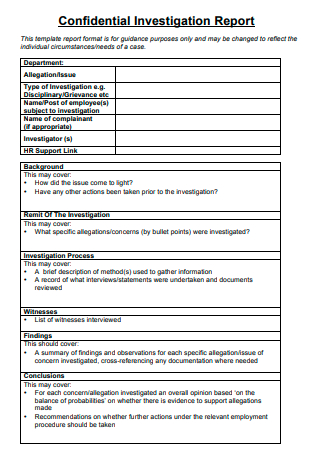
Confidential Investigation Report Template
download now -
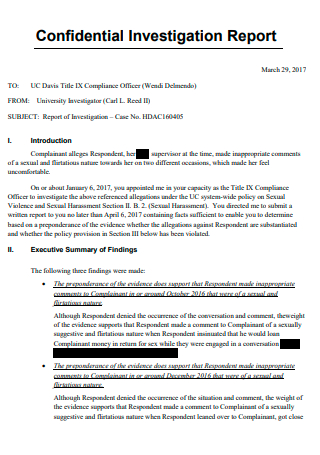
Basic Confidential Investigation Report
download now -

Confidential Final Investigation Report
download now -
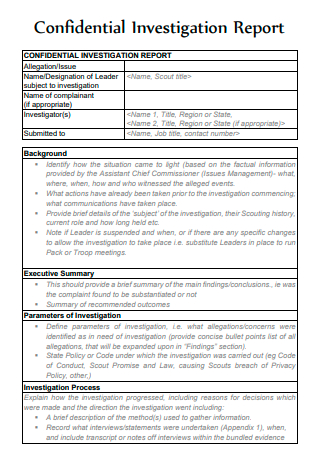
Confidential Investigation Report Example
download now -
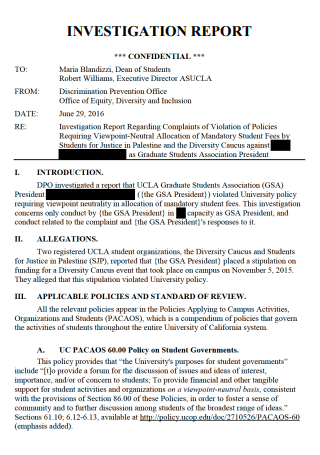
Printable Confidential Investigation Report
download now -

Confidential Client Communication Investigation Report
download now -

Confidential Background Investigation Report
download now -
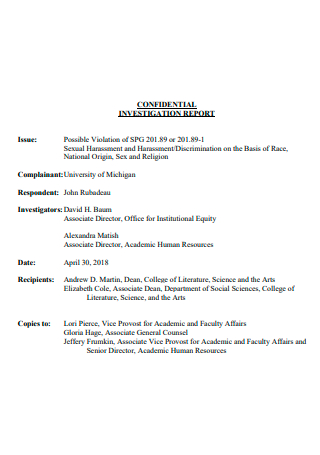
Confidential Investigation Report in PDF
download now -
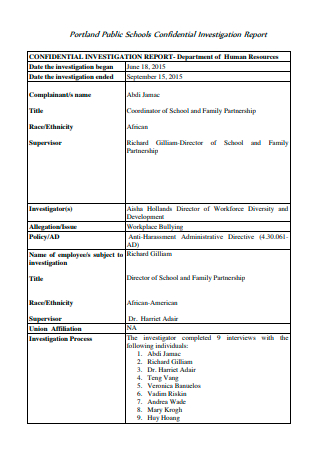
Public Schools Confidential Investigation Report
download now -
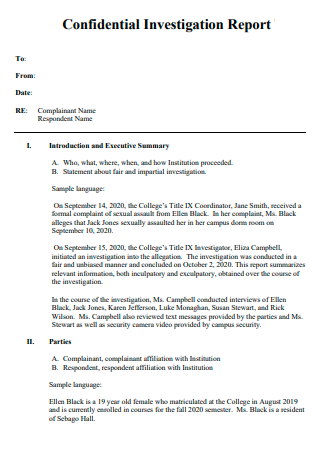
Confidential Investigation Report Format
download now -
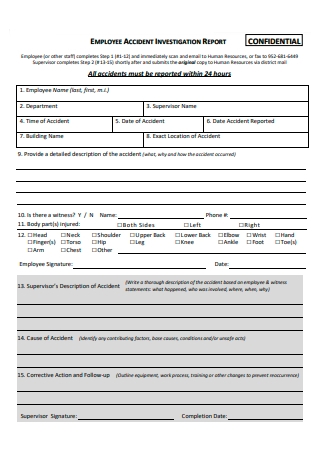
Confidential Employee Accident Investigation Report
download now -
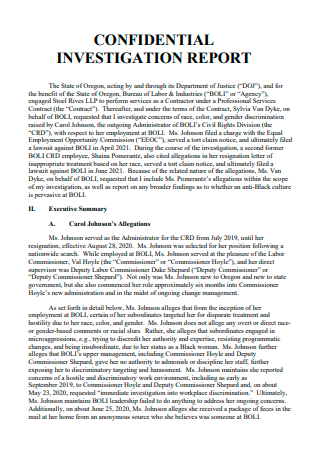
Formal Confidential Investigation Report
download now -
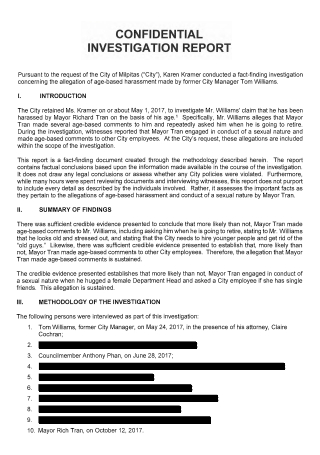
Standard Confidential Investigation Report
download now -

Confidential Accident Investigation Report
download now
FREE Confidential Investigation Report s to Download
13+ Sample Confidential Investigation Report
What Is a Confidential Investigation Report?
Why Is It Important to Write Investigation Report?
How to Write a Confidential Investigation Report
Necessary Details Included in a Confidential Investigation Report
Benefits Of Conducting A Workplace Investigation
FAQs
Is it possible for an employee to see the results of an investigation?
What are the different types of investigation reports?
What characteristics distinguish an excellent investigative report?
What Is a Confidential Investigation Report?
Merriam Webster Dictionary defines confidential as a document that holds material and if released without permission, might jeopardize the national interest. When a formal complaint is filed or an event happens, an investigation report is a document that describes the results of the inquiry. This is where the investigators keep track of the concerns, examine the evidence, and come to a decision. An investigative report is essential because it provides decision-makers with the information they need to make a choice. Investigation reports also seek to guarantee that a case, including workplace events, is investigated in a timely, thorough, and accurate manner.
Why Is It Important to Write Investigation Report?
Accidents are investigated in locations other than police offices through Police Reports. Some businesses have their own internal specialists to deal with problems. Complaints, small faults, and infractions are all possibilities. Such issues are resolved in accordance with corporate regulations, and investigation findings aid in the implementation of preventative measures. Unless the violation violates a state or country’s laws, authorities choose these actions on their own. When this happens, the matter is taken over by law enforcement agencies, and a criminal investigation report is written. Reports play an important part in this, since they may aid in the investigation of crimes and the arrest of criminals. Since a result, it is critical to take the preparation of an investigation report seriously, as inadequate documentation can derail the case.
How to Write a Confidential Investigation Report
An investigation is a process for determining facts about a problem or occurrence in a step-by-step manner. However, without adequate documentation in the form of an official investigation report, it is impossible to provide a comprehensive picture of what occurred. An investigator should take three important procedures to guarantee that all facts, testimonies, and evidence are collected for subsequent study. Fact-finding investigation procedures won’t be quick to accomplish, which is why you should utilize a confidential investigation report template in order to have a prompt base at the ready.
Step 1: List the Basic Information
The very first thing you should do is list the department you belong to, whether it be under a certain company or organization, you need to include who you are affiliated with. Next would be the allegation or issue, the type of Investigation, the name and job title of the Employee involved, the subject of the investigation, and if applicable the name of the complainant, and if there is a present investigator then write their name as well.
Step 2: State Background
The next step you would need to elaborate on is regarding the issue surrounding the investigation. You would need to give sufficient information on how the issue came to be a problem in the Workplace Investigation and what were the actions taken prior to the investigation itself. This helps investigators or authorities who will be reviewing the paperwork to be more aware of the surrounding information regarding the issue.
Step 3: Remit Of The Investigation
As for this step, you would need to elaborate on the specific allegations or concerns of the complainant that were brought to your attention to be investigated. You can list as much as the complainant states. And for it to easily be read, don’t hassle yourself with a paragraph and instead opt for bullet points. Use phrases or as much as what the complainant is stating. Be as specific as possible, spare no details in this part.
Step 4: Investigation Process and Findings
For the next step, you would need to cover and give a brief description of the method that would be used to gather the information necessary to process the complaint. Whether it be seeking out witnesses to interview or going through files and papers, you would need to describe the method. Following such, you would also need to record what the interviewees and their statements are regarding the investigation. And most of all, list out the names of the witnesses that were approached and interviewed. Authorities may have additional inquiries and through knowing who is involved, they can easily approach them. You would also need to write a summary of findings and Observations for each individual accusation or cause for concern examined, with any documentation cross-referenced as appropriate.
Step 5: Conclusions
No Report Form is complete without the presence of a conclusion to wrap up the details of the contents of the Investigation Report. The conclusion includes each concern or allegation was evaluated to obtain an overall conclusion based on the “balance of probability” on whether there was evidence to substantiate the claims made. As well as recommendations on whether or not additional measures should be taken under the applicable employment process. At the very end, it should be signed by the investigating officer if there is a presence of one.
Step 6: Appendices
As for the last step, you should not forget to attach witness statements, investigatory notes, and even the chronological recollection of the events. These act as supplementary evidence and can support the confidential investigation report.
Necessary Details Included in a Confidential Investigation Report
Handling a confidential investigation report is not an easy task, as heavy as an investigation report already is, with the added fact that it is confidential raises the stakes. This is why you must be prepared and utterly thorough when writing a report. And most importantly, have every information, contact resource, and other significant detail included in the report. It is best to have all of it prepared beforehand and have it ready rather than chasing after it when you would initially think it isn’t useful. Another item that can ease your stress is to use a report template, that way you won’t have to start from scratch.
Benefits Of Conducting A Workplace Investigation
There are several advantages to conducting a good Workplace Inspection. For a variety of reasons, your time and effort, whether you lead the investigation or collaborate with an independent investigator, may be quite beneficial to your company.
FAQs
Is it possible for an employee to see the results of an investigation?
If a person has been identified in a report, they have the right to read any sections of the report that contain information about them or are based on information they have given.
What are the different types of investigation reports?
An oral report can save time and save money if the inquiry is done by an outside investigator. However, oral reports must still be accompanied by some sort of documentation. Another type and the most flexible of the written reports are executive summaries. They might be as simple as stating the investigative technique and results to as complex as providing all of the investigator’s analysis and everything in between. It permits the investigator to concentrate on the analysis rather than reciting the evidence or providing background information. An executive summary, like an oral debrief, can save time and money for these reasons.
What characteristics distinguish an excellent investigative report?
The goal of the investigative report should be to inform and convince. The report should describe how the findings were arrived at. Avoid any suggestion of prejudice in the report by keeping it as brief and straightforward as possible.
Investigations are necessary to conduct in order to gather and identify information that may be crucial for your company. And what better way to do it than through a confidential investigation report. That way, you and the company will remain organized and even have a paper trail to support the claims your complainant or witnesses are making and have an official report to send to an authorized party or the investigator. Most importantly, confidential matters are not to be taken lightly. So it is important to handle everything to a certain degree of professionalism and care.
